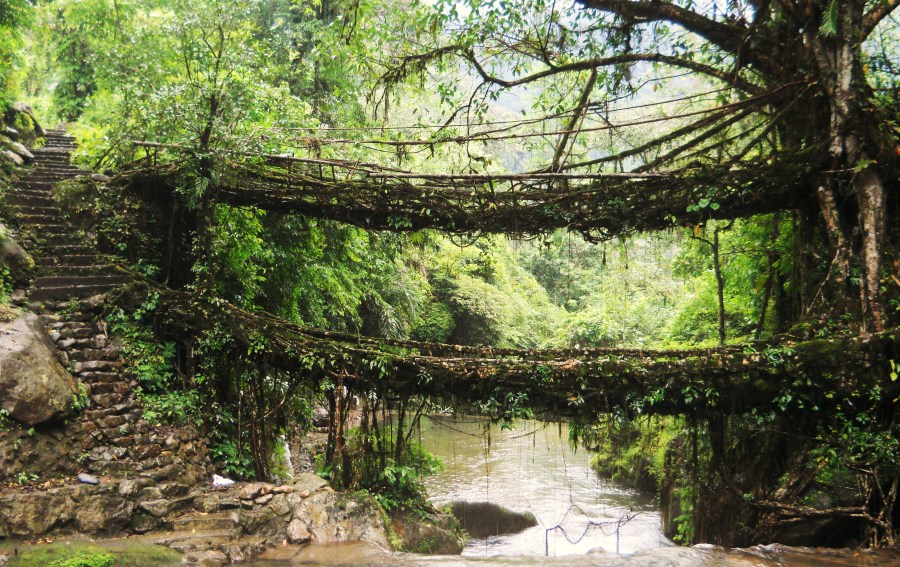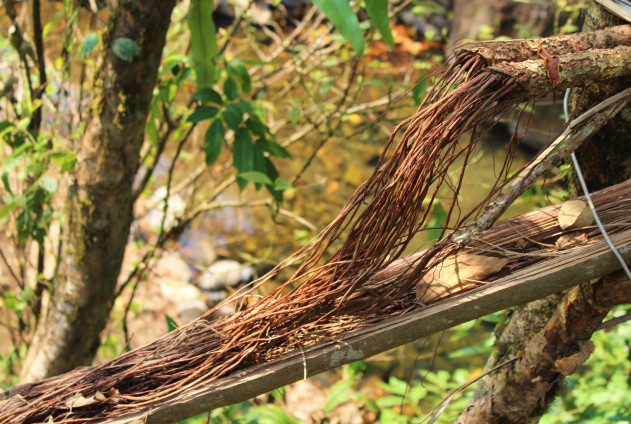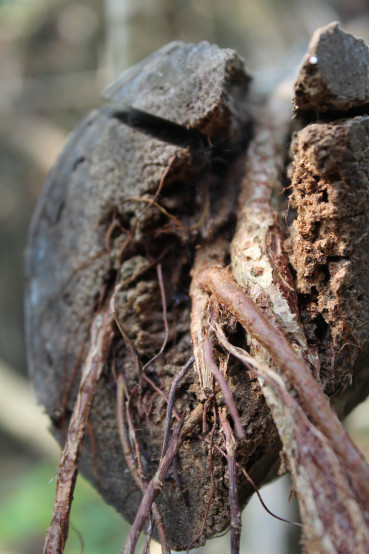| NOTES: |
The Nongriat Double Decker is the most famous living root bridge. Much of the information readily available online about botanical architecture is focused on this single example. As a large part of the economy of Nongriat village is dependent on the bridge, the amount of community involvement in its upkeep is unprecedented. It’s close proximity to the village also makes it very easy to access and maintain. Latex extraction cutting was performed on the bridge before the advent of tourism, but has been outlawed for over a decade. The roots are very well established and strong. The tree appears to be healthy. I’ve received a variety of different answers as to why the bridge was given two spans. The most common is that there was some concern that the lower span would be washed out in a flood (however, no flood damaged has been observed). While the bridge is not, as is often erroneously reported, the only example of a double span living root bridge, it is still of exceptional aesthetic value. A third span is being created above the upper functional span using Areca palm trunks. This is being done for tourism and heritage purposes, rather than for any functional reason. Visitor traffic is heavy, and could cause damage in the future. However, the bridge seems very unlikely to fail in coming years. (Note that the photo above was taken in 2012. The uppermost span was in the very earliest stages of development and has grown significantly since the photo was taken.) |




